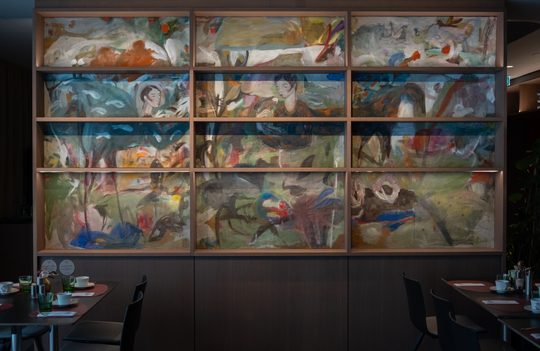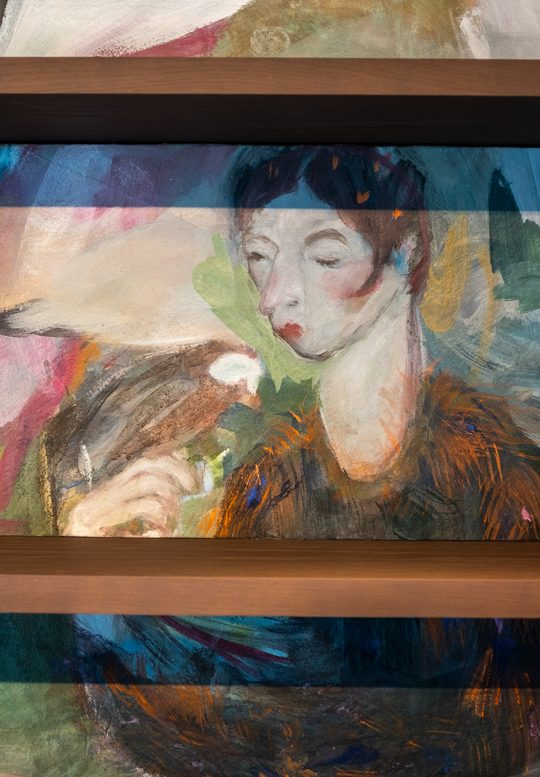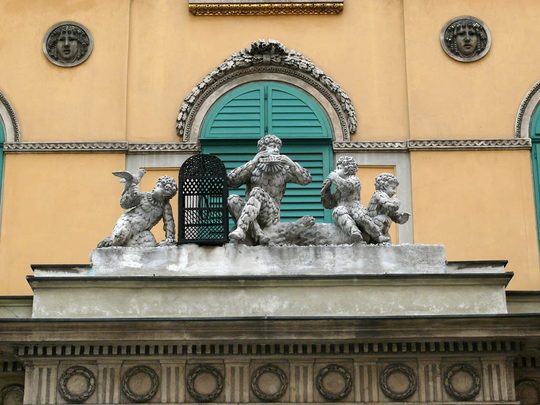The Magic Flute, Part Twelve

Great successes are often followed by sequels. This is true not only in modern cinema but also for 18th-century opera producers, who were already familiar with the concept of a follow-up. Several writers, including Johann Wolfgang von Goethe, attempted to create a sequel to the successful singspiel Die Zauberflöte (Libretto: Schikaneder, Music: Mozart, 1791). Ultimately, Emanuel Schikaneder himself triumphed with Der Zauberflöte zweyter Theil, which premiered in 1798. The plot once again revolved around the battle between the Queen of the Night and Sarastro, as well as numerous trials faced by the couples Tamino and Pamina, and Papageno and Papagena. As before, the story was a mix of heroic redemption and comedic fairy tale. Goethe’s unfinished version would have preserved this duality of the storyline.

However, the twelve-part large painting created by artist Magdalena Maller for the VOLIERE presents a different scenario. The two central figures, depicted half-human or half-bird, could initially be mistaken for Papageno and Papagena, but their delicate features do not align with the coarse, comical world of the bird-catcher. The pale faces of these equal bird-beings instead seem to meet in a dreamlike realm of animistic symbiosis. Maller’s sequel moves away from the Freemasonic elements of Die Zauberflöte and proposes, as a vision for the "improvement of humanity," a general transformation of both body and soul into birds. As a comedy, the story now only requires a new composer.

